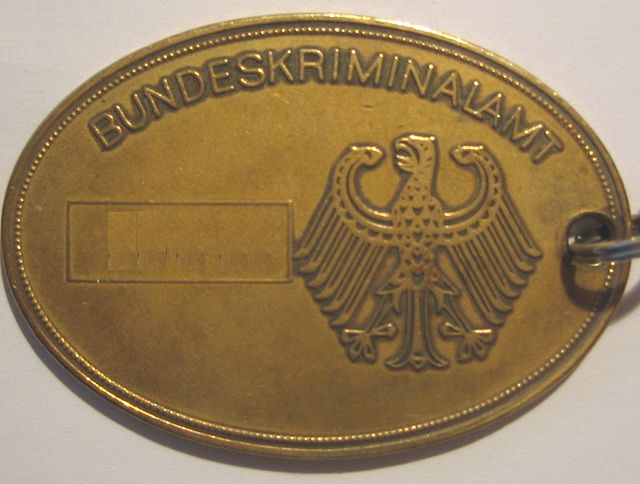A badge is a device or accessory, often containing the insignia of an organization, which is presented or displayed to indicate some feat of service, a special accomplishment, a symbol of authority granted by taking an oath, a sign of legitimate employment or student status, or as a simple means of identification. They are also used in advertising, publicity, and for branding purposes.
Port Authority of New York and New Jersey Police Department badge
Badge of the German Bundeskriminalamt
Back of a badge, with safety pin attachment
Badge pinning
A heraldic badge, emblem, impresa, device, or personal device worn as a badge indicates allegiance to, or the property of, an individual, family or corporate body. Medieval forms are usually called a livery badge, and also a cognizance. They are para-heraldic, not necessarily using elements from the coat of arms of the person or family they represent, though many do, often taking the crest or supporters. Their use is more flexible than that of arms proper.
The Dunstable Swan Jewel, a livery badge from about 1400 AD, perhaps of Henry V as Prince of Wales. British Museum
The Château de Blois, with the porcupine of Louis XII
Imprese from Jacobus Typotius, Symbola Divina et Humana (Prague, 1601), engraved by Aegidius Sadeler II.
Salamander badge of King Francis I of France, with letter "F", Château de Chambord








